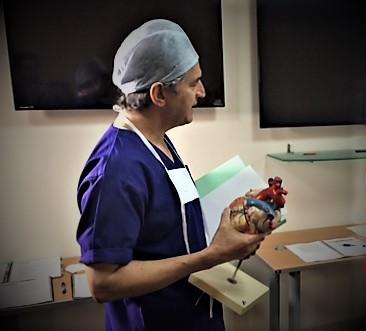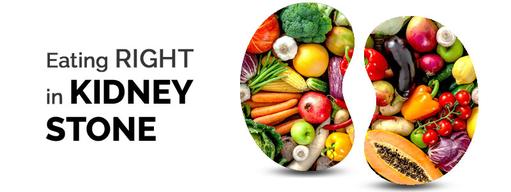Publications
- All
-
Following
You must log in
before getting
tailored content. -
Interests
You must log in
before getting
tailored content. - Most liked
- Most viewed
Directory:
Tags:

- Each year unhealthy diets are linked to 11m deaths worldwide a global study concludes
- Red and processed meat not only cause disease and premature death from chronic non-communicable diseases (NCD) but also put the planet at unnecessary risk
- Evidence suggests that the health benefits of a Mediterranean diet reduces the risk of NCDs and is better for the Planet
Eat like Greeks, live healthier lives and save our planet
Findings of an international research project about the relationship between diet and chronic diseases are reported in a paper entitled, “Health effects of dietary risks in 195 countries 1990-2017. A systematic analysis for the Global Burden of Disease Study 2017”, which is published in the April 2019 edition of The Lancet. The paper suggests that millions of people throughout the world consume an unhealthy diet comprised of too much processed meat, sodium and sugar and too little plant-based foods, such as fruits and vegetables, whole grains and nuts. This results in a significant increase in the prevalence of chronic non-communicable diseases (NCD) such as coronary heart disease, cancer and diabetes and each year causes some 11m avoidable deaths worldwide - 22% of all adult deaths: 10m from cardiovascular disease, 913,000 from cancer and some 339,000 from type-2 diabetes. According to the paper’s authors, “A suboptimal diet is responsible for more deaths than any other risks globally, including tobacco smoking, highlighting the urgent need for improving human diet across nations”.
In this Commentary
This Commentary reviews evidence of recent large-scale epidemiology studies, which suggest that “you are what you eat”. Not only do unhealthy diets cause ill health and premature death for millions, they also harm the environment and push the Earth beyond its planetary boundaries. All the studies we describe conclude that we know the answer to this vast and escalating health problem: eat like Greeks or indeed the Japanese. Notwithstanding, changing the way populations collectively eat is a massive challenge facing governments, healthcare systems and individuals.
The Global Burden of Disease project
The Lancet paper’s findings described above are based on the Global Burden of Disease (GBD) enterprise, which is one of the world’s largest scientific collaborative research projects, which was started in the early 1990s by the World Bank to measure the impact of disability and death from hundreds of diseases worldwide. Over the past two decades its work has grown, and the endeavour has become institutionalized at the World Health Organization (WHO). Today, the GBD project is an international consortium of more than 3,600 researchers, its findings are updated annually and they influence health policy throughout the world.
Red meat and bowel cancer
Findings of a more narrowly focussed but nonetheless significant study, published in the April 2019 edition of the International Journal of Epidemiology warn that red-processed meat consumption is linked with bowel cancer. According to Tim Key, the study’s co-author, Professor of Epidemiology and Deputy Director at Oxford University's Cancer Epidemiology Unit, “Results strongly suggest that people who eat red and processed meat four or five times a week have a higher risk of developing bowel cancer than those who eat red and processed meat less than twice a week . . . . There’s substantial evidence that red and processed meat are linked to bowel cancer and the World Health Organization classifies processed meat as ‘carcinogenic’ and red meat as ‘probably carcinogenic’”. Notwithstanding, Key warns that, “Diet studies are problematic because those who take part often either forget what they have eaten or fail to tell the truth”. Key also suggests that, “Most previous research [on diet and cancer] looked at people in the 1990s or earlier and diets have changed significantly since then”.
Chronic non-communicable diseases
Chronic non-communicable diseases (NCD) are largely caused by humans and are therefore preventable. Notwithstanding, they account for more than 70% of all deaths globally and emergent NCDs pose significant systemic challenges for both nation states and individuals. Forty percent of all adults in the world are overweight and 1.4bn suffer from hypertension: both critical risk factors of NCDs. In 2016, 18m people died from cardiovascular disease (CVD), representing 31% of all global deaths. In the US an estimated 92m adults are living with CVD. By 2030, 44% of the US adult population is projected to have some form of CVD. There are around 7m people living with heart and circulatory disease in the UK. Worldwide some 0.5bn people have diabetes and in 2018 there were 17m new cases of cancer worldwide. Although there are some encouraging signs associated with the slowing of the prevalence rates of NCDs globally, prevalence of NCDs is expected to rise because of population growth and aging, misaligned healthcare policies and institutional inertia.
The paradox of food insecurity and obesity
Paradoxically, food scarcity and obesity are both forms of malnutrition and represent a vast and escalating burden on the worlds limited and diminishing resources. This is because food insecurity can contribute to people being overweight and obese. Nutritious fresh foods often tend to be expensive, so when household resources for food become scarce, people choose less expensive foods that are often high in calories and low in nutrients. As a result, adult obesity rates continue to rise each year, from 11.7% in 2012 to 13.2% in 2016. In 2017 the World Health Organization estimated that more than one in eight adults, or more than 672m people in the world, were obese and 2bn were classified as overweight. A report from the Center for Strategic and International Studies, a think-tank based in Washington DC, US, suggests that worldwide each year, "Malnutrition costs US$3.5trn, with overweight- and obesity-related NCDs, such as cardiovascular disease and type 2 diabetes, adding US$2trn”.
The EAT-Lancet Commission on Food, Planet and Health
Not only do unhealthy diets result in NCDs and premature death, but they also harm the environment. The dual aspects of unhealthy diets causing disease and harming the planet are described in research conducted by the EAT-Lancet Commission on Food, Planet and Health, and reported in the January 2019 edition of The Lancet.
|
|
Directory:
Tags:

|
Devi Shetty’s model for affordable healthcare
On the 26th March 2019 Bloomberg Businessweek published an article entitled, "The World’s Cheapest Hospital has to Get Even Cheaper”, which describes one of India’s largest private hospital chain's - Narayana Health - response to Modicare, a signature initiative by Prime Minister Narendra Modi to provide basic healthcare for 500m of India’s poorest. Devi Shetty, a world-renowned cardiac surgeon and chairman of Narayana Health, is up for the task. Since Shetty founded Narayana in 2000 it has grown to become a large multi-speciality hospital chain, comprising 31 state-of-the-art tertiary hospitals across 19 cities, employing 16,000 and each year treating over 2.5m patients across more than 30 medical specialities. Shetty’s mission is to provide high quality, affordable healthcare services to the broader population in India and he is convinced that quality and low-cost healthcare are not mutually exclusive. In conjunction with the state of Karnataka, Shetty has created a health insurance plan, which has enrolled some 3m poor people at an annual premium of about US$2.6. More than half of Narayana’s cardiac operations are performed on patients too poor to afford the full cost. In addition to the insurance scheme free or subsidized inpatient care is achieved through philanthropy and a cross-subsidy model, in which higher-income patients pay more for nonclinical amenities, such as private recovery rooms. Since the total charges are still far below the cost of comparable services at other private Indian hospitals, Narayana Health remains an attractive option for such consumers. Narayana Health’s business model is sustainable because of its ability to attract so many patients who can pay full price. The Wall Street Journal has dubbed Shetty, The Henry Ford of Heart Surgery because he applies assembly line concepts to surgery in order to optimize productivity, minimize costs and leverage economies of scale. Because of these innovations the average cost of open-heart surgery, as reported by Narayana Health, is less than US$2,000. The same procedure at a US research hospital typically costs more than US$100,000. Since 2012 HealthPad has worked closely with Devi Shetty. We published our first Commentary about Narayana Health and Devi Shetty’s model for affordable quality healthcare in 2013 and in subsequent years published two more. Shetty and his fellow senior surgeons have contributed over 700 videos to HealthPad’s content library, which address FAQs across 11 clinical pathways. Further, Narayana’s clinicians have featured in HealthPad Commentaries on Chronic obstructive pulmonary disease (COPD), Diabetes and Kidney Disease and Cardiovascular Disease. Because of the large and growing international interest in Shetty’s alternative model for affordable healthcare we re-publish lightly edited versions of HealthPad’s three Commentaries about Narayana Health. |
|
|
|
Directory:
Tags:

First published on 14th August 2013
The UK’s NHS loss is global healthcare’s gain
In 2011 Devi Shetty, an Indian doctor, received the coveted business process innovation award in London from The Economist for his contribution to global healthcare. Trained as a cardiac surgeon in the UK, Shetty returned to India and started a hospital in Bengaluru in 2000. Today, Shetty is on the cusp of changing healthcare in the 21st century.
Shetty’s no-frills hospital chain
In 2012 Shetty launched the first in a chain of no-frills hospitals: a 200-bed single-storey clinic in Mysore, India. Built in 10 months for US$7m, it charges only US$800 for open heart surgery. Shetty rejected the multi-storey hospital model, because it requires costly foundations, steel reinforcements, lifts and complex fire and safety equipment. Much of the Mysore building was pre-fabricated. Its five operating theatres and intensive care units are the only air-conditioned places and families are encouraged to provide supplementary care for patients.
Shetty’s no-frills hospital chain owes its existence to his pioneering hospital in Bengaluru.
Shetty’s no-frills hospital chain owes its existence to his pioneering hospital in Bengaluru.
Shetty’s medical city in Bengaluru
In 2000 Shetty started Narayana Hrudayalaya, a specialist hospital for cardiac surgery, which today performs the highest number of heart surgeries in the world for any one hospital: 7,000 annually and does not compromise on quality. “We are only technicians,” says Shetty. ”We realised that as you do more surgical procedures, your results get better, and your costs go down. In the US the average cardiac surgeon does about 2,000 surgeries in his or her professional lifetime. We have surgeons who have done more than 3,000 surgeries and they’re only in their 30s . . . imagine the expertise that they have, at that young age.”
Medicines and associated hospital costs in India are significantly lower than in the West, but Narayana offers Indian patients value for money. The average price for open heart surgery in Narayana is around US$2,000, compared to US$5,000 in the average private Indian hospital and $20,000 to $100,000 in a US hospital.
Shortly after starting his Bengaluru cardiac centre, Shetty acquired a 35-acre site next door and built a 1,400-bed cancer hospital and a 300-bed eye hospital and created Narayana Hrudayalaya Medical City, which has 3,000 beds in Bengaluru and is run at near to full capacity. In total Narayana has some 7,000 beds in a number of clinics and hospitals throughout India, and plans to expand to 50,000 beds in the next five years.
Medicines and associated hospital costs in India are significantly lower than in the West, but Narayana offers Indian patients value for money. The average price for open heart surgery in Narayana is around US$2,000, compared to US$5,000 in the average private Indian hospital and $20,000 to $100,000 in a US hospital.
Shortly after starting his Bengaluru cardiac centre, Shetty acquired a 35-acre site next door and built a 1,400-bed cancer hospital and a 300-bed eye hospital and created Narayana Hrudayalaya Medical City, which has 3,000 beds in Bengaluru and is run at near to full capacity. In total Narayana has some 7,000 beds in a number of clinics and hospitals throughout India, and plans to expand to 50,000 beds in the next five years.
Tele-medicine
In association with India’s Space Research Organization, Sherry's Bengaluru hospital runs one of the world’s largest tele-cardiology programs, which reaches 100 facilities throughout India, over 50 across Africa and Narayana’s doctors have treated some 70,000 patients remotely. Narayana Health also disperses 5,000 kidney dialysis machines, which makes the company India’s largest kidney-care provider.
Health insurance
With the state of Karnataka, Shetty has created a health insurance plan, which has enrolled some 3m poor people at an annual premium of about US$2.6. Last year, about 60% of Narayana Hrudayalaya cardiac operations were performed on patients too poor to afford the full cost.
Shetty however is not a charity. His hospitals treat a cross section of patients at variable rates but refuse to turn away anyone who cannot pay. “Charity,” he says, “is not scalable. Good healthcare depends on good business.” Shetty’s hospital group earns an after-tax profit of 8%, slightly above the 6.9% average for a US hospital.
Shetty however is not a charity. His hospitals treat a cross section of patients at variable rates but refuse to turn away anyone who cannot pay. “Charity,” he says, “is not scalable. Good healthcare depends on good business.” Shetty’s hospital group earns an after-tax profit of 8%, slightly above the 6.9% average for a US hospital.
Health City Cayman Islands
Shetty has now turned his attention outside of India and is engaged in a joint venture with the government of the Cayman Islands and a group of American institutional investors, to construct and operate a hospital in Grand Cayman to capture share from the North and South American healthcare markets.
The first phase, a 140-bed tertiary care facility for cardiac surgery, cardiology and orthopaedics, was opened in 2014 and benefits from the cost-effective healthcare procedures honed by Shetty over the past decade. By 2020, the Cayman enterprise, which also will have a medical university and an assisted-care living community, is projected to expand into a 2,000-bed Joint Commission International-accredited Health City providing care in all major specialties.
The first phase, a 140-bed tertiary care facility for cardiac surgery, cardiology and orthopaedics, was opened in 2014 and benefits from the cost-effective healthcare procedures honed by Shetty over the past decade. By 2020, the Cayman enterprise, which also will have a medical university and an assisted-care living community, is projected to expand into a 2,000-bed Joint Commission International-accredited Health City providing care in all major specialties.
Super-size hospitals
At a time when the global healthcare debate is emphasising community based preventative strategies, Shetty’s vision is, “affordable healthcare for everyone in super-size hospitals. Today healthcare has got phenomenal services to offer,” he says. “Almost every disease can be cured and if you can't cure patients, you can give them meaningful lives.” Shetty is driven by the fact that a century after heart surgery was developed only 10% of the world’s population can afford it. Each year, India alone needs 2.5m heart operations and yet there are only 90,000 performed.
"Current regulatory structures, policies and business strategies [for healthcare] are wrong,” says Shetty, “If they were right, we should have reached 90% of the world's population." Recently, he shocked a UK audience of health providers by suggesting that it would be better if England only had three centres for cardiac surgery rather than 22.
"Current regulatory structures, policies and business strategies [for healthcare] are wrong,” says Shetty, “If they were right, we should have reached 90% of the world's population." Recently, he shocked a UK audience of health providers by suggesting that it would be better if England only had three centres for cardiac surgery rather than 22.
The Henry Ford of heart surgery
Sir Bruce Keogh, the UK’s former National Medical Director of the NHS Commissioning Board, once suggested that healthcare in England should become more like retail. Shetty thinks like a retailer, views patients as “customers” and has employed mass production techniques used in the early 20th century to automate the American car industry. Known as, “the Henry Ford of heart surgery”, Shetty has demonstrated that high volume complex surgeries mean better outcomes and lower costs. Similar to what Henry Ford did for the auto industry, Shetty has disaggregated clinical procedures into a number of discrete, standardized, unambiguous units, which can be learnt, practiced and repeated. His methods have successfully reduced hospital costs, increased efficiency, enhanced the quality of care and eliminated clinical mistakes. According to Shetty, “Healthcare has huge variation in procedures, outcomes and costs . . . It is the lack of standardization that contributes to hospital mistakes, high costs and low quality of care”.
Change is inevitable
Shetty is convinced that the dearth of health workers worldwide will force change and increase the use of emerging healthcare technologies. An advocate for open technological systems, he says, “In five years a computer will make more accurate diagnoses than doctors. In 10-years it will be mandatory for a doctor to get a second opinion from a computer before starting treatment.”
Takeaways
Not only will Shetty’s Health City Cayman Islands be a lower cost alternative for North and South American patients, it will demonstrate how over-priced and inefficient hospitals in the West are. However, it is not altogether clear whether Shetty’s formula for low-cost high-quality surgical procedures will be effective outside of India. This is mainly because high quality ancillary services associated with complex surgeries, which are relatively inexpensive in India, tend to be patchy and significantly more costly outside of India. Notwithstanding, Shetty is determined to provide the world with a model of affordable healthcare.
Directory:
Tags:

|
|
|
Foods That Aggravate The Kidney Stone Disease
If you are suffering from kidney stone, then you must consult with an experienced Dietitian.
The human body is composed of complex organ systems. When all these systems work in union, you enjoy a great healthy life.
But if any one or more organs malfunction, it takes a serious toll on the person’s health. Kidney is one such essential body organ that flushes out body toxins.
Thousands of people suffering from kidney stones reach out to the doctors. Kidney stones are also called renal lithiasis or nephrolithiasis.. Read more about The Diet Chart Of Patients With Kidney Stones

The Diet Chart Of Patients With Kidney Stones

|
|
|














